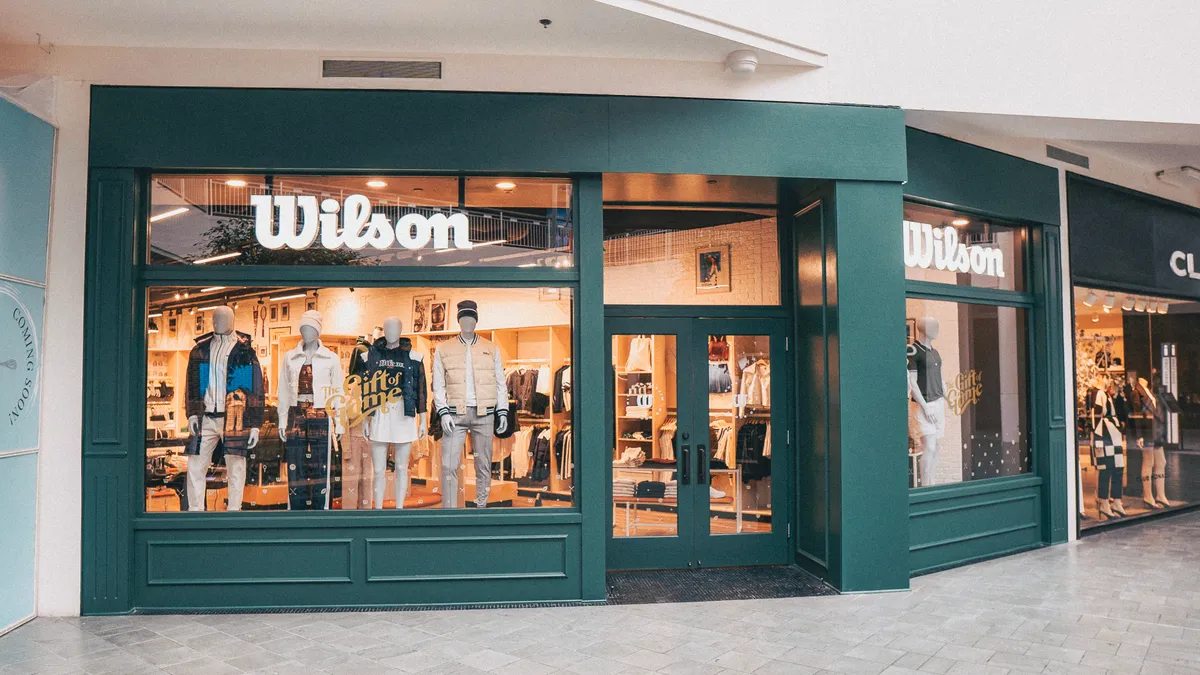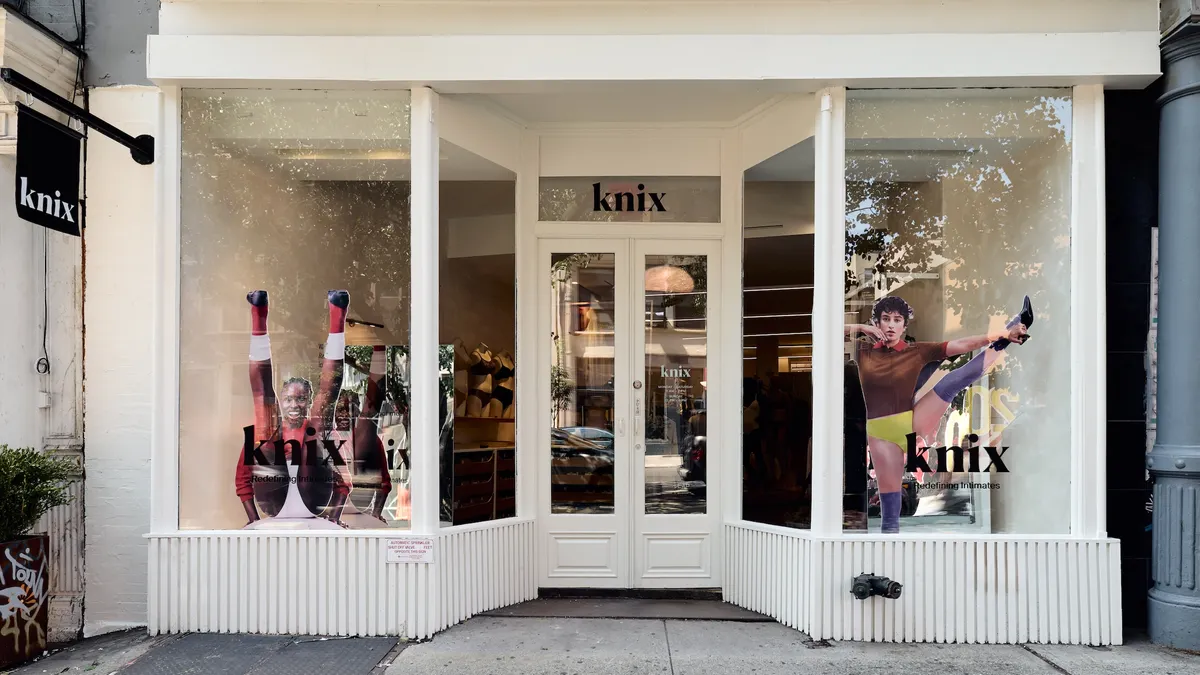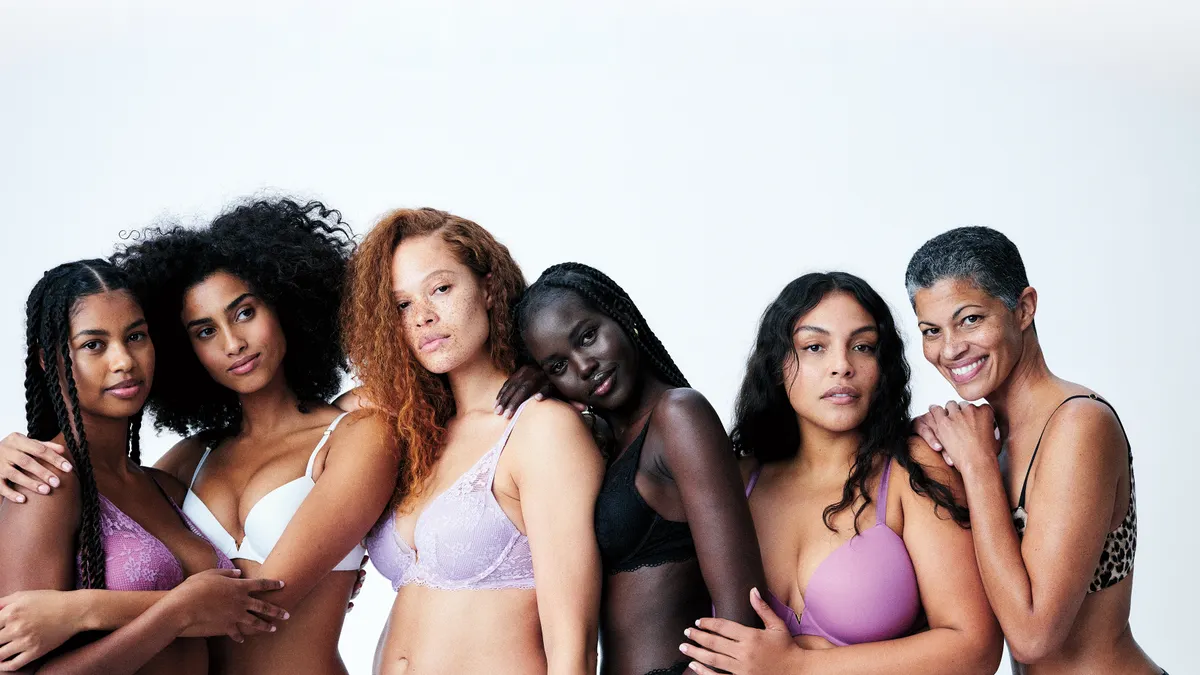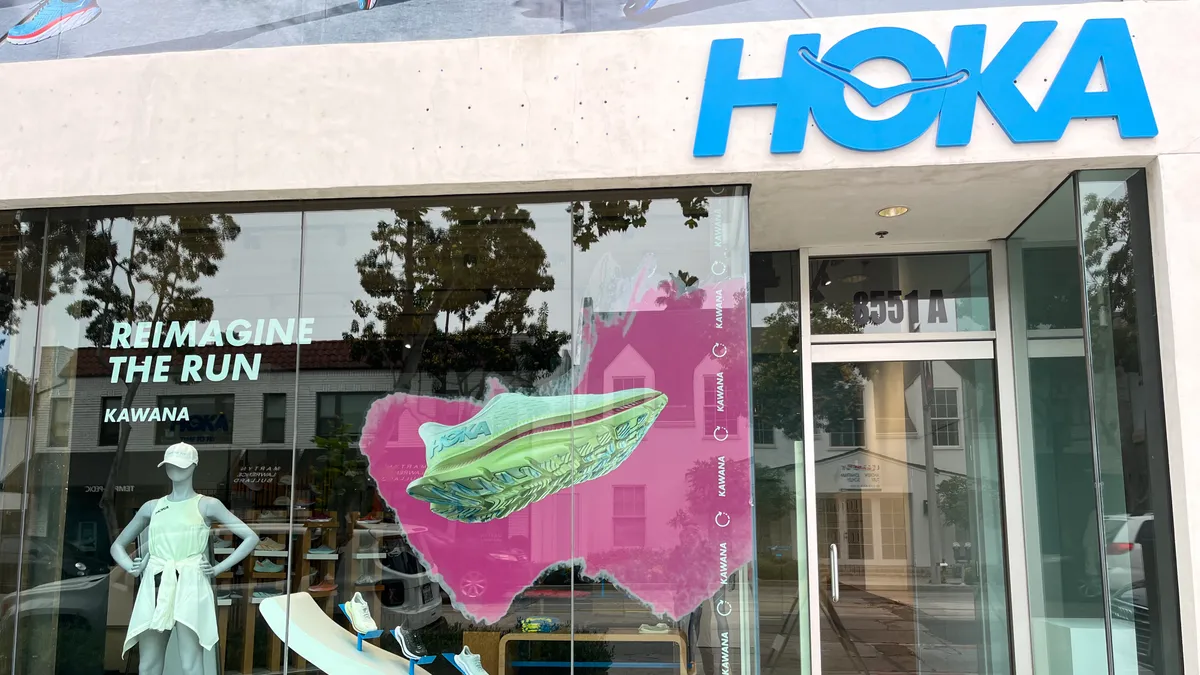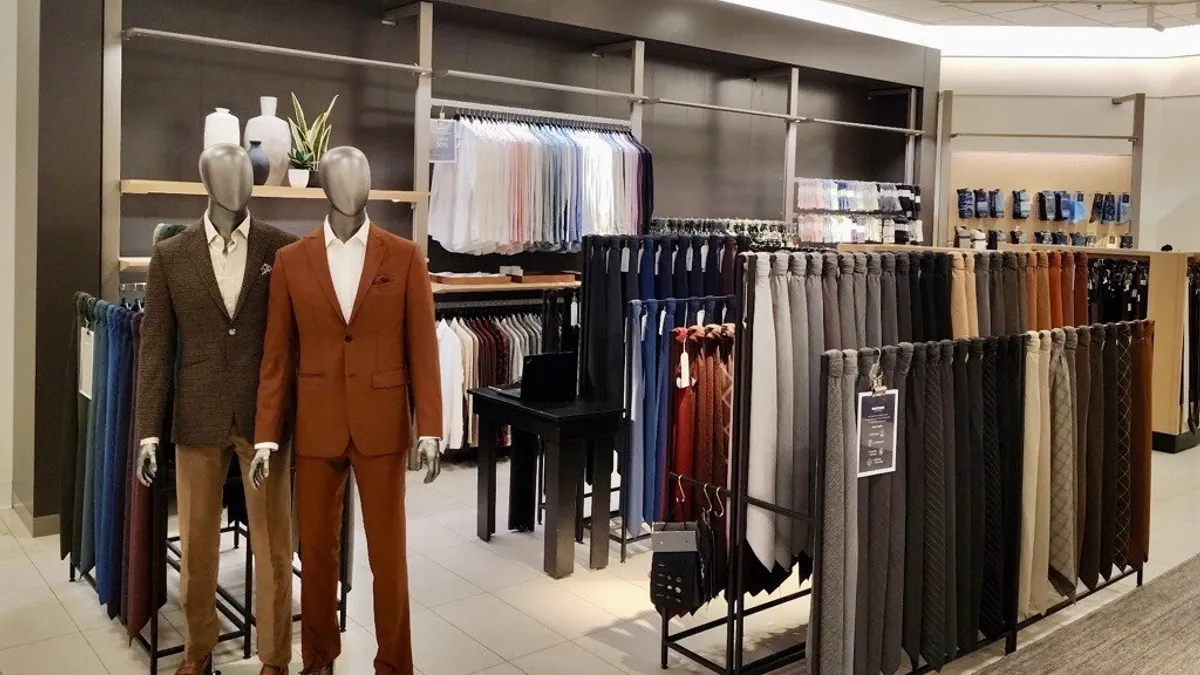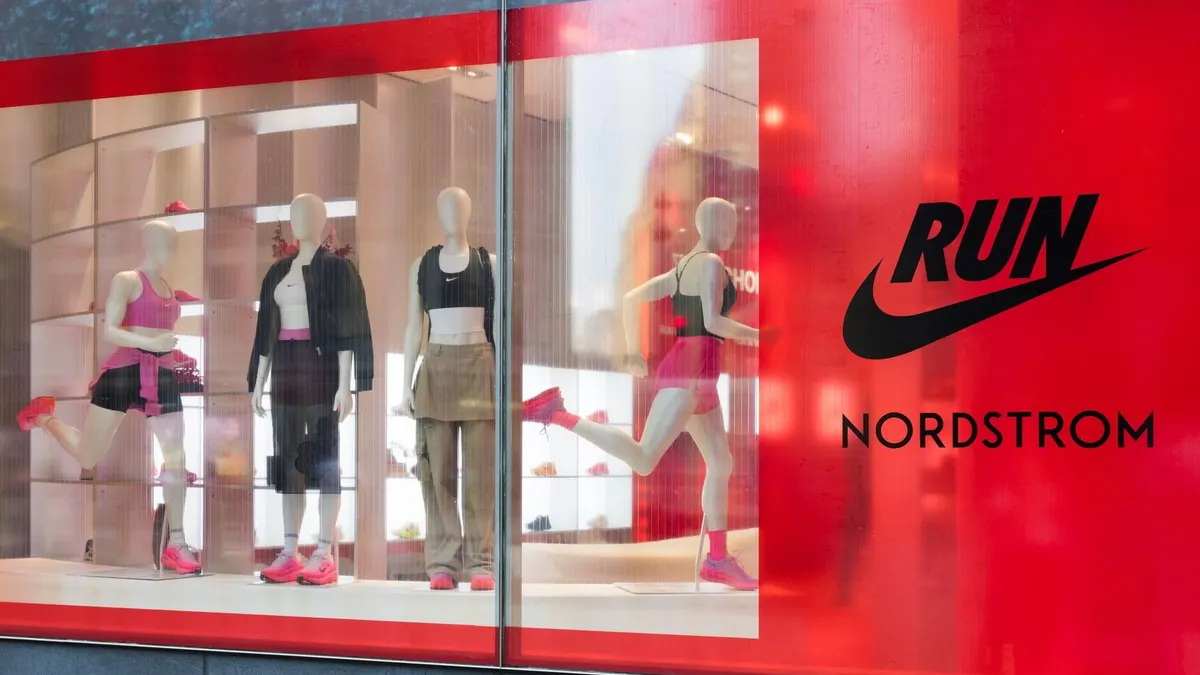For Neiman Marcus and Saks Fifth Avenue, the past few years have brought huge changes (and even a failed push for the two luxury retailers to merge).
In 2020, during the peak of the pandemic, Neiman Marcus filed for bankruptcy, exiting in September that year with a plan to shed $4 billion in debt. The next year, the department store refinanced an additional $1.1 billion in debt.
“If I look back to six years ago when I joined the company, the company was 10 times levered,” CEO Geoffroy van Raemdonck said in a discussion at the ICR Conference in January. “We couldn't invest in the business. We were very focused on transactions, as opposed to driving relationships and gaining share.”
Now, van Raemdonck says the retailer has “a solid balance sheet and strong liquidity.” With more financial flexibility, the retailer has invested in its supply chain, opened a new distribution center, added data capabilities to improve personalization and is in the midst of a $200 million investment in stores, which is partially funded by its brands and landlords.
Saks Fifth Avenue, for its part, split its e-commerce and brick-and-mortar businesses in 2021 as part of a broader push by parent company HBC to unlock value, which established Saks.com as its own stand-alone company. (Neiman Marcus has rejected that very same concept in the past.)
Saks’ online business laid off about 100 people, or 3.5% of its total workforce, in January last year. And just this month, Bloomberg reported the parent company was looking to refinance a $1.3 billion loan ahead of an October due date.
Prior to Saks’ layoffs last year, the online arm’s headcount had more than doubled. After the layoffs it remained more than double what it was before the 2021 separation. Digital-only businesses in retail have struggled with profitability, but Saks CEO Marc Metrick said in a separate presentation at ICR that the same isn’t true at the luxury retailer’s e-commerce site.
“It’s important and that’s never changed,” Metrick, who runs the online business, said of profitability. Now, however, “it’s changing for everybody else, and it's sort of leveled the playing field. If you go back in time and think about it, all of us that were running these websites as department stores: We had to be profitable, we had to report quarterly, we had to have sales this year versus last year. And then you have these pure plays that were able to go out there and just trade on growth multiples — or revenue multiples.”
As the new year starts, here’s what Metrick and van Raemdonck had to say about pure-play luxury and the state of the consumer.
‘Yeah but they don’t make money’
Like much of retail, e-commerce has disrupted the luxury landscape in recent years, bringing a traditionally in-person buying experience online. And much like other digital-led companies, many of those in luxury have struggled to turn a profit. In a dramatic example of that last month, luxury marketplace Farfetch agreed to sell itself to Coupang, a move one analyst called “shocking.”
“We are extremely surprised that the company had to take such a dramatic step,” Wedbush analysts led by Tom Nikic said at the time of the deal. “Just 4 months ago they … stated that they had ‘strong liquidity’ to last at least 12 months.”
Also in December, Matchesfashion sold itself to Frasers Group for just $63 million. Consolidation is expected to continue in 2024 as smaller players struggle to raise financing and underperformers run out of cash. In the wake of that trend, luxury sales models are once again under scrutiny. But in some ways, that’s just the nature of retail, according to Metrick.
“If you walked down Fifth Avenue 30 years ago, 35 years ago, you had Bonwit Teller, you had Bendel’s … Barneys on Madison Avenue,” Metrick said. “This is natural evolution in our business. And just like everything else, the online version of it happens faster. And I think that's what we're seeing now: We're seeing a little bit of that correction and it's going to be a little bit harder to do business for just anybody.”
“The brands are looking for insight around what's the white space in the market. They know that they're growing, but they don't know if that's the ceiling or if that's only the tip of the iceberg.”

Geoffroy van Raemdonck
Neiman Marcus CEO
The departure of the sky-high valuations and “growth-at-all-costs” mindset for e-commerce brands is arguably a good thing for old school retailers like Saks and Neiman Marcus, who have more pressure to make money without the startup tag applied to them.
“The consumer, by the way, doesn't care what your valuation is, doesn't care what your leverage ratios are,” Metrick said, recalling that his wife once gushed about a digital brand because of its beautiful photography and packaging. “I said, ‘Yeah but they don't make money’ and she said ‘So what?’ The consumer doesn't care. So the best thing that's happening actually for us is: It's been a reset. And not for us cause we’ve always had profitability as a key KPI, but for everybody else.”
For Neiman Marcus, the profitability challenges for pure-play luxury e-commerce mean more business for itself. As growth stagnates, more DTC brands are turning to wholesale for help scaling.
“I think the industry is doubling down on the players that they believe will be the best to provide service and have longevity,” van Raemdonck said. “And so we're gaining a lot of distribution, we’re gaining investment from them and we’re gaining a lot of exclusives. And so when I think about that environment, what's important for us is to continue to lead in relationships with customers, because in a world where the demand is softer, you could capture the demand from the customers you know.”
Van Raemdonck attributes Neiman Marcus’ stability to a variety of factors, including the department store’s omnichannel approach to retail, its conscious curation of product and a team of sales associates that have personal relationships with shoppers. According to van Raemdonck, Neiman Marcus has 3,300 sales associates that have spent more than a decade with the retailer and about 1,100 that book more than $1 million a year.
“That's really our secret weapon,” van Raemdonck said. “And we've really worked hard on equipping these sales associates to reach the customer, to build relationships and to maintain those relationships in moments of volatility.”
The chance to gain access to those customer-sales associate relationships is a big selling point for DTC brands considering who to sell through, the executive noted, especially with customer acquisition as costly as it is. So, too, is the ability to scale quickly, since selling through Neiman Marcus means brands don’t have to figure out building an entire store. Even as brands “powerfully edit” their retail partners, in van Raemdonck’s words, Neiman Marcus says it hasn’t lost any since COVID — and in fact, has gained some.
Neiman Marcus has exclusive distribution globally now with Schiaparelli, for example. Van Raemdonck said the department store has added 800 points of distribution over the years by expanding its assortment with certain brands to include, say, shoes or handbags (that would qualify as two points of distribution). Neiman Marcus also brought in 185 new fashion brands last year and says that 90% of its top brands include something that is unique to Neiman Marcus, whether it’s an exclusive collection or a special activation.
“The brands are looking for insight around what's the white space in the market,” van Raemdonck said. “They know that they're growing, but they don't know if that's the ceiling or if that's only the tip of the iceberg. So we give them a lot of insight on assortment and then they're looking to reach a specific customer and we do micro-targeting to get them to the right customer.”
Another potential benefit to digital-first brands is that, as a department store, Neiman Marcus by definition houses a host of different categories.
“Most luxury brands … are still very focused on one category. But they all aspire to move from handbags to shoes and ready to wear or another permutation of those three elements,” van Raemdonck said. “We are the perfect playground for them to be exposing to categories where they're less known.”
Partnering with digital brands is one way of defending territory in the luxury space, and retailers shouldn’t be shying away from new competition, according to Metrick.
“The monolithic treatment of the consumer to manage these things — that’s the road to hell.”

Marc Metrick
Saks CEO
“This is an industry that constantly innovates and who knew who all these businesses were 10, 15 years ago?” Metrick said. “So there might be a new entrant and a new way of coming into the market whether it's live selling, whether it's through Web3 if that ever really comes back around. I would not be doing my job if I said ‘OK, good. Now things are going to seem comfortable and where they are for the next couple of years.’”
Saks and Neiman Marcus both have their own e-commerce presence as well, which presents them with some of the same challenges as digital-first brands — like returns. Metrick said Saks doesn’t charge for online returns, and that working capital is the real pain point when it comes to returns.
That being said, nearly half of the returns from Saks.com go back to a physical department store, Metrick noted, which represents a large financial benefit compared to DTC brands that have to fund free return shipping on everything.
“However, I don't think it's efficient and really great for the business long term to be running with high return rates,” Metrick said, noting that there are some ways to tackle the issue currently. “If Joe is a high-returning customer, and we know Joe's shopping right now, we might not show him certain things that have higher return propensity.”
The improvement of sizing technology could also help alleviate the problem. And heavy returners can be treated differently than other shoppers, especially since personalization is getting more sophisticated, according to Metrick.
“The monolithic treatment of the consumer to manage these things — that’s the road to hell. What you have to do over time — personalization is kind of a hacky buzzword that's being overused right now, candidly — but what you have to do is, you have to take an individualized approach to how you're managing your business, even on the nonexciting stuff like returns,” Metrick said. “In the end, there’s going to be returns and we're just going to have to figure out a way to make sure that the consumer is getting what they want.”
The ‘drug’ of promotions and the state of the consumer
Luxury retailers focused on e-commerce may be facing unique challenges, but they’re not alone. The entire luxury sector is experiencing customer demand that is “volatile and promotional,” as van Raemdonck characterizes it.
There has been a higher volume of promotions in the past year or so and the customer has come to expect discounts, the executive said, especially online. The expectation of discounts was exacerbated, too, by the sector’s efforts to clear inventory last year.
“There was too much inventory in the market for the last year, we all lived through that. And now I think everyone, including us, is starting to get their balance sheets in order,” Neiman Marcus Chief Financial Officer Katie Anderson said. “I would say the challenge is that the consumer has been just on a drug of the constant promotions. The consumer isn’t looking at everyone's balance sheets and saying, ‘Hey, everyone’s really balanced, I'm ready to buy only full price.’ And so the market continues to be very promotional. I think it's going to take time to adjust regardless of where the balance sheets are.”
“The notion of assortment curation is the opposite of a marketplace where it's an endless aisle.”

Geoffroy van Raemdonck
Neiman Marcus CEO
How does one navigate a volatile market? Van Raemdonck hopes the retailer’s model is the answer. Neiman Marcus customers who buy with the help of a sales associate spend 12 times more than those who don’t and customers that shop across two or more channels spend five times more than one-channel shoppers, according to the executive.
“Luxury is a considered purchase and we all want to be inspired, convinced that this is the right product for us,” van Raemdonck said of why its sales-assisted model helps drive purchases. And when it comes to merchandising, “the notion of assortment curation is the opposite of a marketplace where it's an endless aisle — and we've seen the challenge of profitability in that.”
The department store has a team of merchants that choose which brands to carry and what assortment within a given brand to stock. “And then we buy with conviction,” van Raemdonck said.
Still, luxury is also contending with the end of a few consumer behavior tailwinds that were benefiting it from the pandemic era. Saks’ Metrick noted that younger consumers and otherwise nontraditional luxury purchasers were turning to the category more when they weren’t paying for other services, like Ubers or salon blowouts. Since last year, though, those consumers have “taken a beat.” Indeed, a report from Earnest Analytics in November found that luxury apparel sales dropped 21% early in the month, in part due to “aspirational shoppers” holding back on purchases.
“Your core luxury consumer ... it's entrenched in their life,” Metrick said. “Everything is exactly right out of central casting. We love those people. Then you have a large portion of luxury consumers out there that make choices, right? And for a while, we were benefiting — and everyone was — from the fact that they weren't going to concerts, they weren't traveling, so the ‘or’ just became an ‘only.’”
Then, inevitably, the tide turned back the other direction as consumers cut back on discretionary purchases amid rising headwinds like student loan repayments and the lack of stimulus funding. Credit card debt, too, has grown as shoppers look for ways to support their lifestyles. All of that makes for a tough sell for luxury retailers, but Metrick is hopeful that trends are about to shift again.
“It used to be sunglasses were the gateway drug for men's fashion. That's where men got their first Prada or Gucci was sunglasses. Then it became sneakers.”

Marc Metrick
Saks CEO
“The luxury consumer is going to start off the year slow and I think reemerge as the second half comes around,” Metrick said.
For now, it’s still impacting financial results. According to Earnest Analytics data, luxury spending fell 10% during the holiday period as customers stayed focused on more affordable purchases. Neiman Marcus’ sales during the holiday period declined in the low-single digits, which van Raemdonck attributed to the slowdown in customer demand. He noted, though, that the company grew business with its best customers.
In recent years, Neiman Marcus has honed in on the top 2% of its customers, which drive 40% of sales and spend an average of $27,000 a year at the luxury department store. The company has refocused around full-price selling, keeping just five off-price locations for “strategic clearance” but otherwise exiting that sales channel. Neiman Marcus ideally wants to broaden its base of customers that can spend that kind of money, but it’s not the only demographic that’s of interest.
“If you look at our customer base today compared to before, the men’s business is significantly bigger,” van Raemdonck said. “Men during COVID discovered luxury and they are in it to stay. And it is the same: We've seen younger customers participate in luxury. They may be part of the normalization, but they are in luxury.”
Saks, too, says it has a “pretty underdeveloped men’s business,” but has worked harder to locate potential customers in recent years. At one point, that even meant buying advertising on fantasy football sites. The intersection of sports and luxury, with star athletes increasingly interested in sporting designer brands, has been beneficial in raising awareness in the men’s demographic, according to Metrick. In one example, Metrick cited John Franklin-Myers, a defensive end for the New York Jets, carrying a Goyard bag into the locker room at a game.
“I think sports was a gateway for men to luxury and I think not only is it a gateway for them to see specific products, but it’s a gateway for them to understand and feel very comfortable with it,” Metrick said. “It used to be sunglasses were the gateway drug for men's fashion. That's where men got their first Prada or Gucci was sunglasses. Then it became sneakers. And that's where the athletes came in.”








